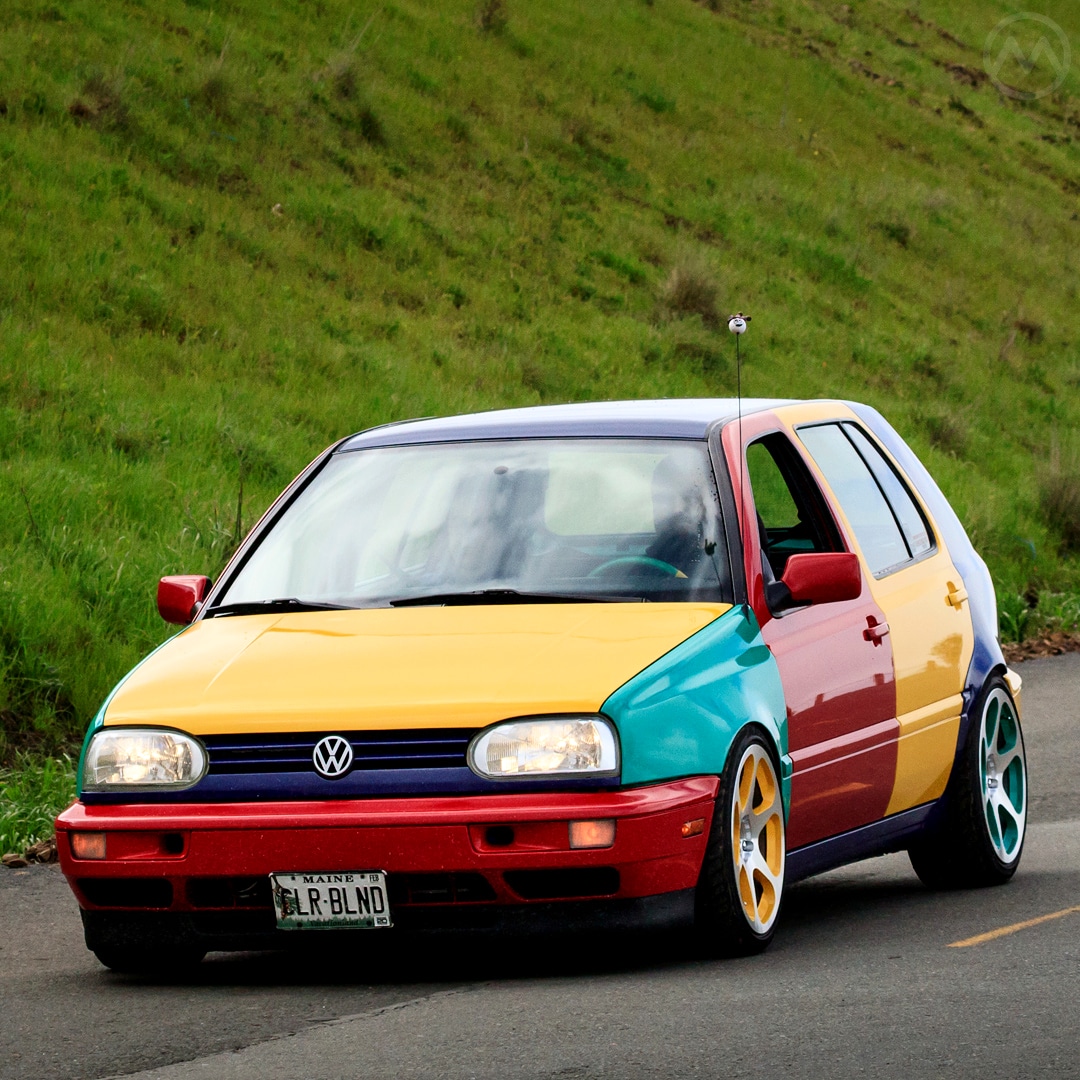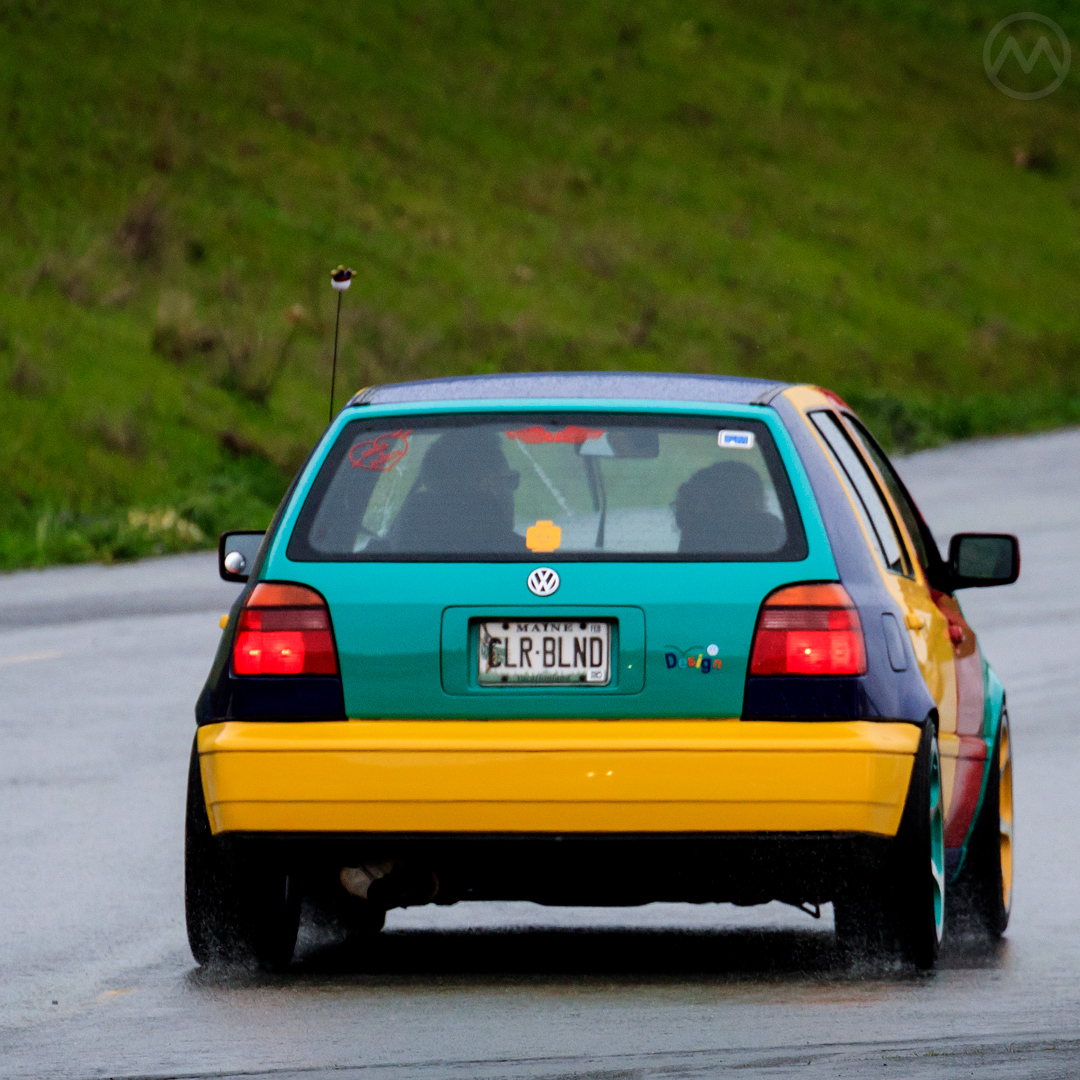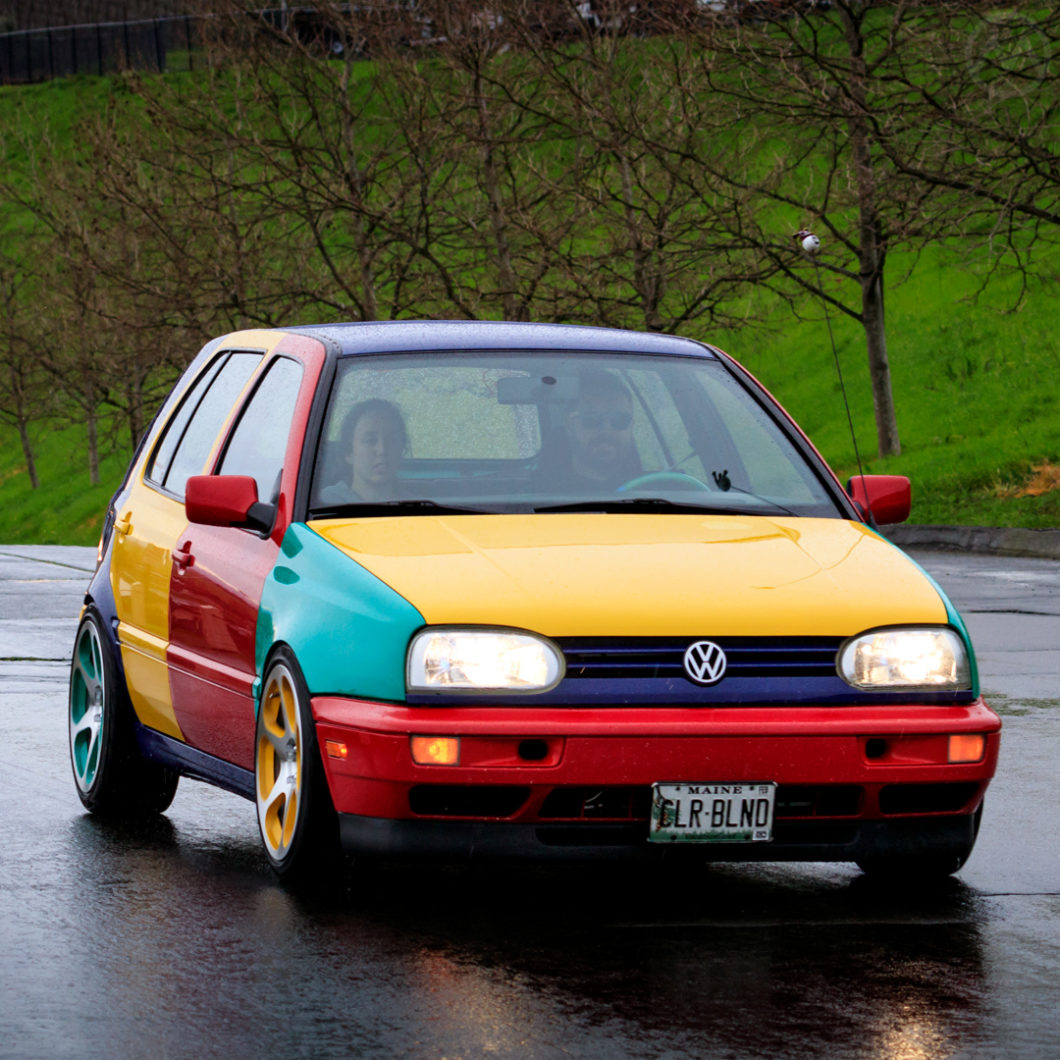Those colors are unmistakable – it can only be the Volkswagen Harlequin Golf. It’s one of the most unusual special editions ever offered in the USA and proved incomprehensible to Americans. Fewer than 300 were made in all.
In the beginning, of course, Volkswagen of America had every reason to expect that this multi-hued joker would do well. The car was a North-American follow-up to the hugely successful 1995 Polo Harlekin. When four test cars were shown to VW’s American execs and dealers in late 1995/early 1996, they got a very positive response. American consumers, however, ultimately gave it the cold shoulder.
There are two beginnings to this story.
The first was the origin of the multi-paneled concept. It came from one of the legendary Doyle Dane Bernbach Volkswagen ads of the 1960s. This 1964 North American print ad depicted a Beetle with multi-hued panels sourced from other VWs, highlighting the car’s unchanging and frugal nature. This idea was never considered for production, and the obscure ad was never noticed again, until the early 1990s.
The second origin was the huge proliferation of special trims on some European cars – particularly economy cars and small family hatchbacks. Renault’s mk1 Clio and Ford’s MkV Euro-Escort had no fewer than 12 specials each and sometimes multiple variations of specials of the same name. Lots of other makers got into the act, too.
Most were just equipment level specials with special graphics or fabrics and decals, but they were a popular way of dressing up ordinary cars. Some had very specific themes, like the Fiat Panda Italia 90, created for that year’s world cup. Most were more generic, but ouldn’t you rather have a Citroën AX Spree than a regular AX, or an Escort Acapulco instead of a bog standard one?
Some of them were quite ordinary cars, too, distinguished primarily by pinstripes or fabric or an option package.
The Polo Harlekin
Volkswagen did not dive headlong into this concept like Renault or Ford, but in 1994 a VW exec decided to make really wild Polo by combining the multi-colored panel idea from the 1960s ad with the special edition concept – thus was born the 1995 Polo Harlekin.
The MkIII VW Polo was only a little over a year old and needed no help selling, but could have used a dash of excitement.
This would be the most unusual and out-size special of them all – not just unusual paint colors or fabrics, but a genuinely unusual concept. Four base colors were chosen – Tornado Red, Ginster Yellow, Pistachio Green and Chagall Blue. The cars were assembled on the typical Polo production line at Pamplona (where Polos were built from late 1994) as normal, then shifted to a special reassembly area where the removable exterior panels were swapped around in four specific combinations – this way, every panel area contrasted with those around it but there was some order to how they were assembled. The cars were then finished with a special fabric interior.
Originally, the plan for the Polo Harlekin (note the German spelling) was to build 1,000 units of the limited-production special. Demand, however, was extremely strong – in the end, about 3,800 Harlekins were built and they were fast sellers.

All the colors individually were quite trendy in Europe at that time, and although car colors are somewhat more subtle today, it’s still true that European buyers prefer more vibrant colors than North American ones; perhaps a bellwether of what was to come.
If it worked in Europe and the UK, why not try it in America? VW did not offer the Polo in the United States (and never has, despite many requests from VW enthusiasts), so if the company was going to try this idea, it would have to be translated to the Golf.
The Harlequin Golf
In December, 1995, VW built four Golfs in the same arrangement and shipped them to the USA. The cars were painted, then disassembled and reassembled in four specific panel combinations just as the Polos had been. Inside they had a very similar special fabric with a vaguely Mondrian-like pattern and a unique shift knob.
The mechanical pieces were entirely stock Golf GL items, with only a 2.0L, 115-hp four mated to an automatic or a five-speeder. The car cost only $150 more than a regular GL.
This initial quartet were shown to dealers at the end of the year and through January and December – they were also shown publicly on a few occasions such as the Detroit and Chicago auto shows. They got a positive response from showgoers and dealers alike.
The Golf Harlequin, now with an English spelling, was to be an offering unique to North America – it had no Euro-market equivalent, though two of the base colors were Europe-only (Chagall Blue and Pistachio Green). A run of 60 cars was enthusiastically ordered early in the year, then a run of ~200 more in the spring. This was a tiny test sample but if the car flew off the lots like the Polo, VW would probably have built more of them, but that’s not how things worked out.
A few consumers truly loved the very unusual cars – and they attracted a great deal of attention at first. But it wasn’t long before the Harlequins began to languish on dealer lots. Because of the small number of cars, not every dealer got one – some got more than one, and then had a hard time offloading them. Jim Ellis Volkswagen, a relatively new dealership in Georgia, got many more – ostensibly to promote them during the upcoming 1996 Atlanta Olympics.
Within a few months, more than one Harlequin was a parts runner or courtesy car for its dealer, and the Altanta cars were used as courtesy cars during the Olympiad. Dealers found they just could not sell them once the few enthusiastic buyers who wanted one had gotten one.
A few were still on sale into 1998, while some were sold as discounted used vehicles and still a handful more were reassembled into solid color cars, resulting in the rare appearance of the two euro-only colors on North American models.
Volkswagen itself has given contradictory information on just how many Golf Harlequin units were built, but the consensus is that no more than 275 were made, and probably only 264. The car was something genuinely novel, but may have reminded some customers of rather more prosaic “carlequins” caused by missing panels from damage or age.

Yesterday’s failure, however, is today’s collectible. The extreme rarity of the Golf Harlequin eventually made it valuable to collectors even though the Mk3 Golf took longer than its two predecessors to develop a strong following; and despite its relatively mild performance.
The Harlequins have strong club support – almost half of the cars are documented survivors. Not all are stock though (and this one, seen at a Radwood event, definitely isn’t), since many Mk3 Golf Enthusiasts have modified their cars for more power, a modified appearance, or keener handling. The treatment has also inspired a variety of custom “Carlequins” on other cars ever since.

